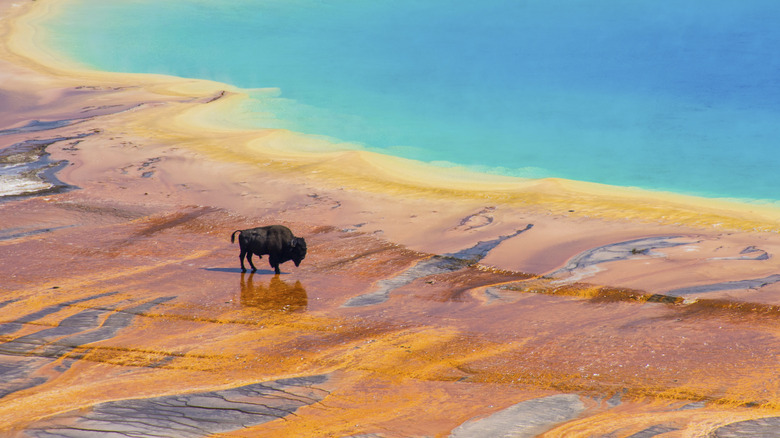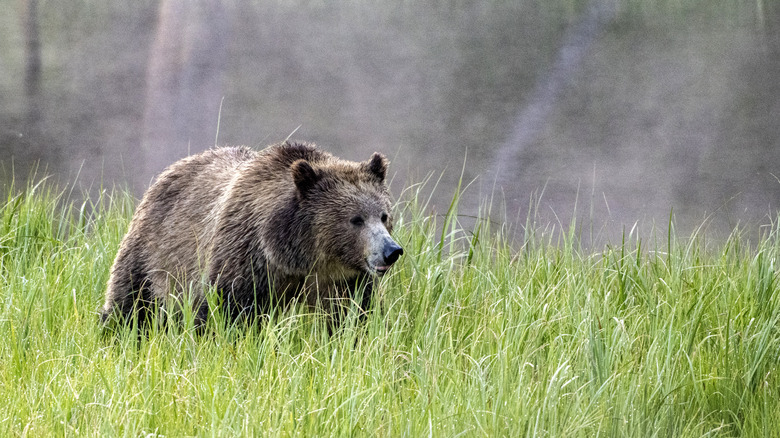Why Yellowstone Ranks Among The National Parks With America's Highest Death Rates
National parks offer outdoor enthusiasts a chance to reconnect with nature in its wildest form. Yellowstone, established in 1872, is the second-oldest national park in the U.S. — it's preceded only by Hot Springs in Arkansas, which was established in 1832. With a surface area of 3,472 square miles, it's no surprise that Yellowstone National Park holds a special place in American history and culture. But with untamed nature comes risk and potential danger, making the destination among the U.S. national parks with the highest death rates. A whopping 74 deaths happened within the park between 2007 and 2023, so what exactly makes it so deadly?
One of Yellowstone's dangerous aspects is also among its most famous natural assets: over 10,000 hydrothermal features, with more than 500 geysers such as the iconic Old Faithful. While, at first glance, thermal sources and other hydrothermal hotspots may look harmless, third-degree burns are one of the most common causes of injury and death inside Yellowstone. And what about the park's hot springs? Although they may appear safe, they can be extremely dangerous. Yellowstone has had at least 20 reported deaths from burns from visitors falling into or entering hot springs. More rarely, people have died from inhaling toxic gases that accumulate in hydrothermal areas. Visitors are encouraged to stay aware and, if feeling sick, to leave the area immediately.
Other common causes of injury and death in Yellowstone National Park
Many travel to national parks to observe wildlife in their untouched habitats. River otters and pikas are among the adorable animals tourists might spot at Yellowstone. But visitors should also be aware that the destination is on the list of national parks where you're almost guaranteed to see a bear — this means precautions are in order.
Sharing a space with large animals such as black and grizzly bears, elk, and bison requires a high degree of awareness and alertness. Park officials also warn about animals that may seem calm, like the mighty bison, but are actually responsible for more animal-to-human injuries than any other wildlife in Yellowstone. The National Park Service recommends keeping a minimum of 25 yards between you and elk and bison, with at least 100 yards between you and bears, wolves, and cougars. While attacks on humans are rare, when they do occur, it's often because visitors were not following the park's safety recommendations, like hiking solo. Since 1970, 91% of documented bear attacks targeted solo hikers or groups of only two people.
Nature has a lot to give, much of which should be respected and protected. That said, natural hazards aren't Yellowstone's most common cause of fatalities. Park officials report that traffic-related accidents are the most common cause of injury or death in the reserve, occurring when visitors park where they should not, or do not respect the speed limit in place. Before your visit, read up on how to protect yourself, fellow visitors, and best practices to avoid violent encounters and disrupting animals.

